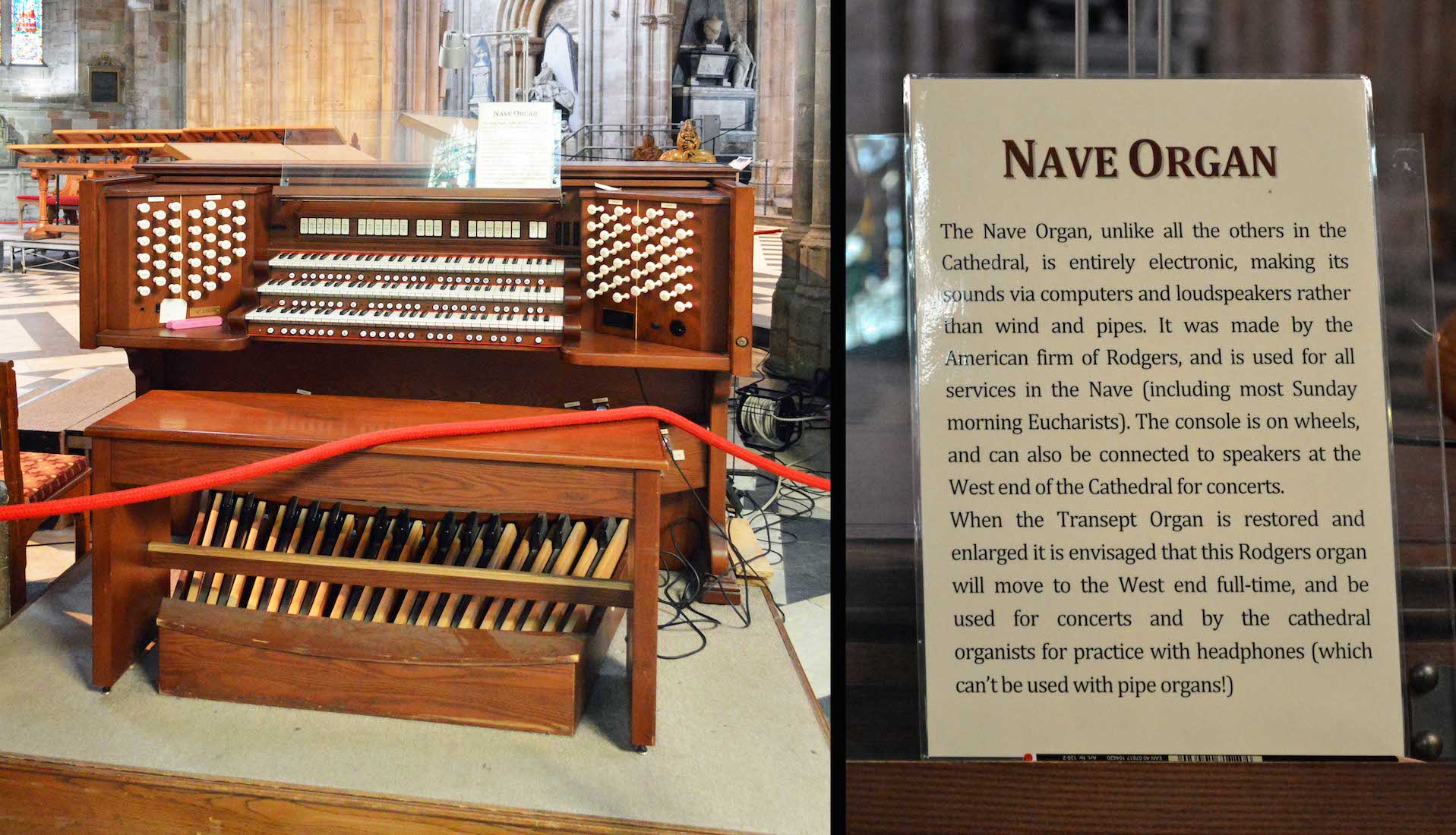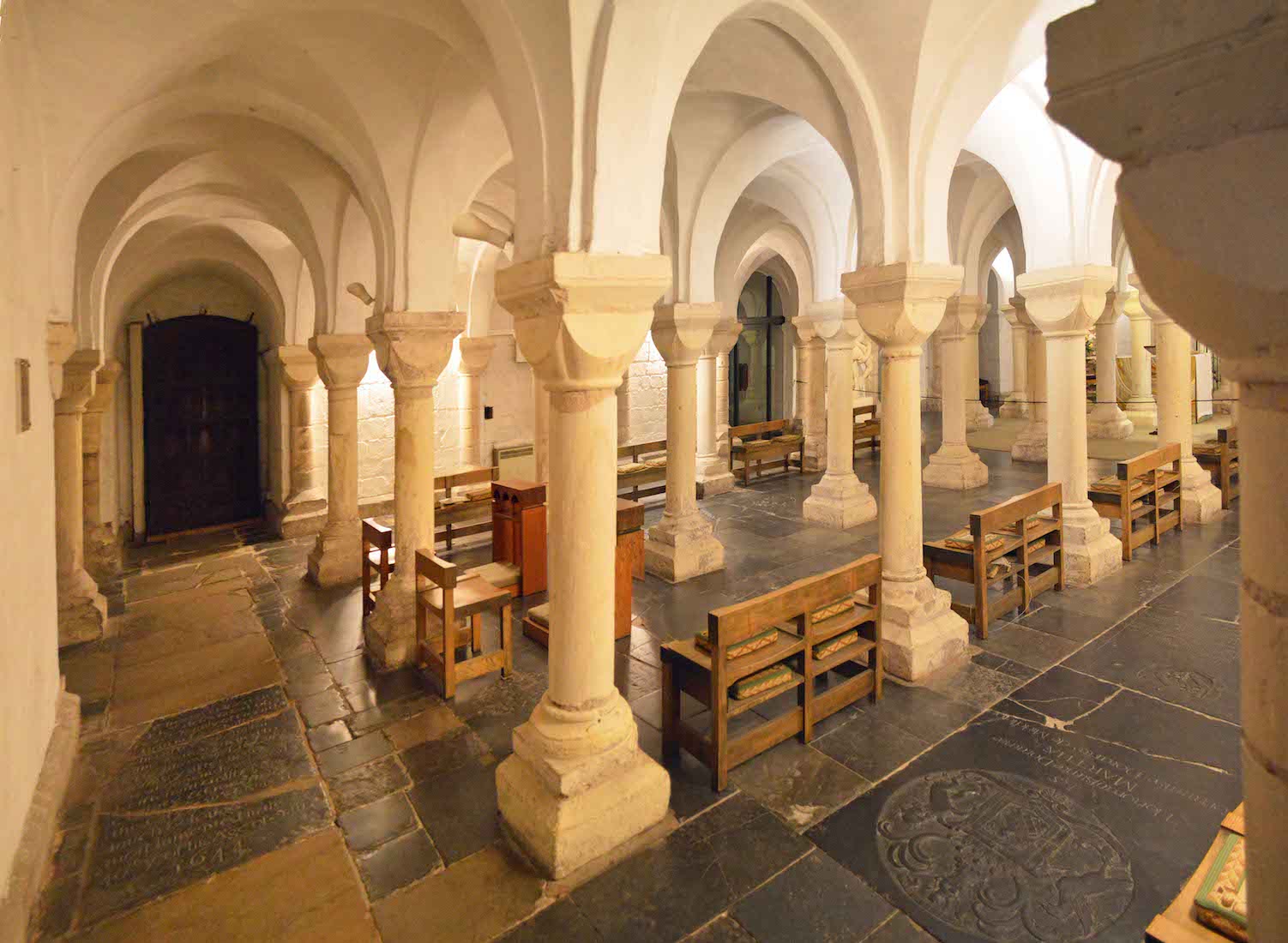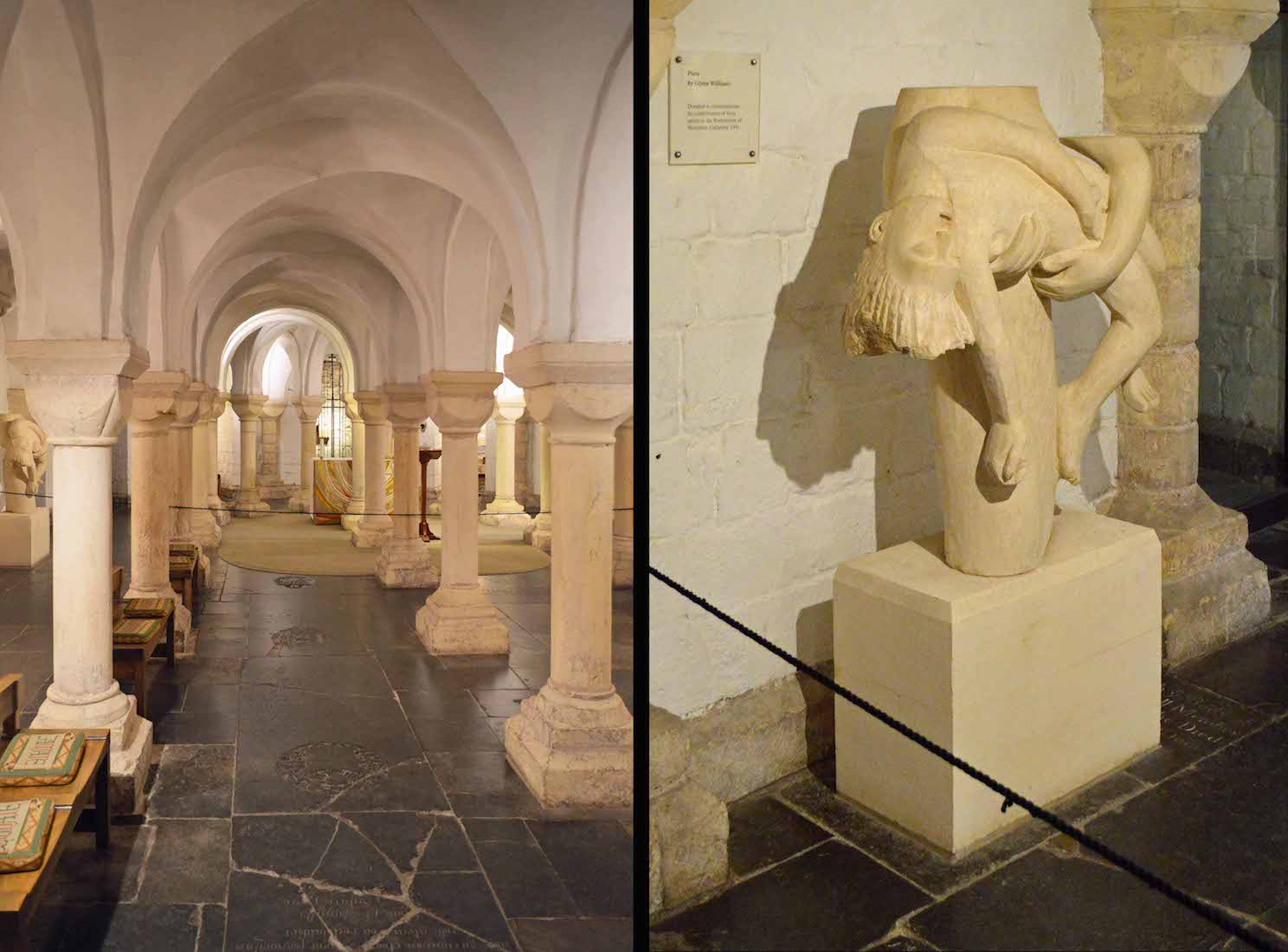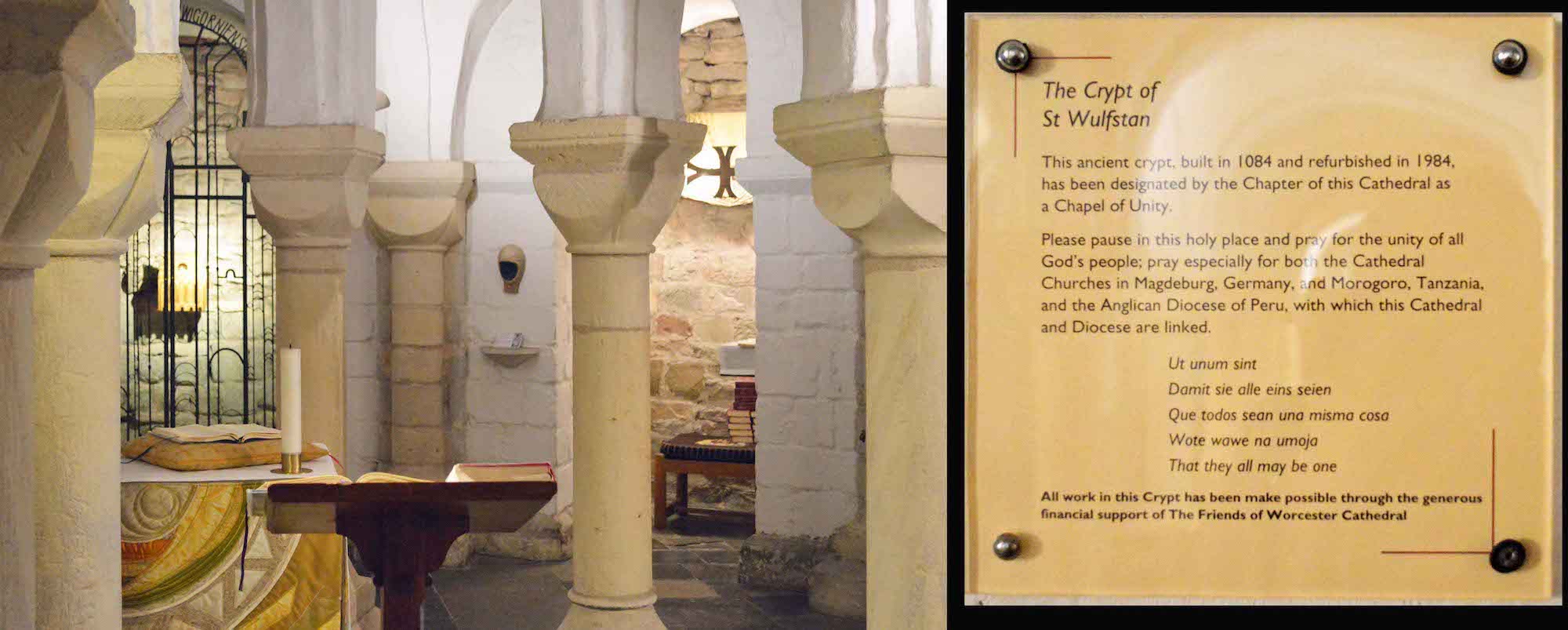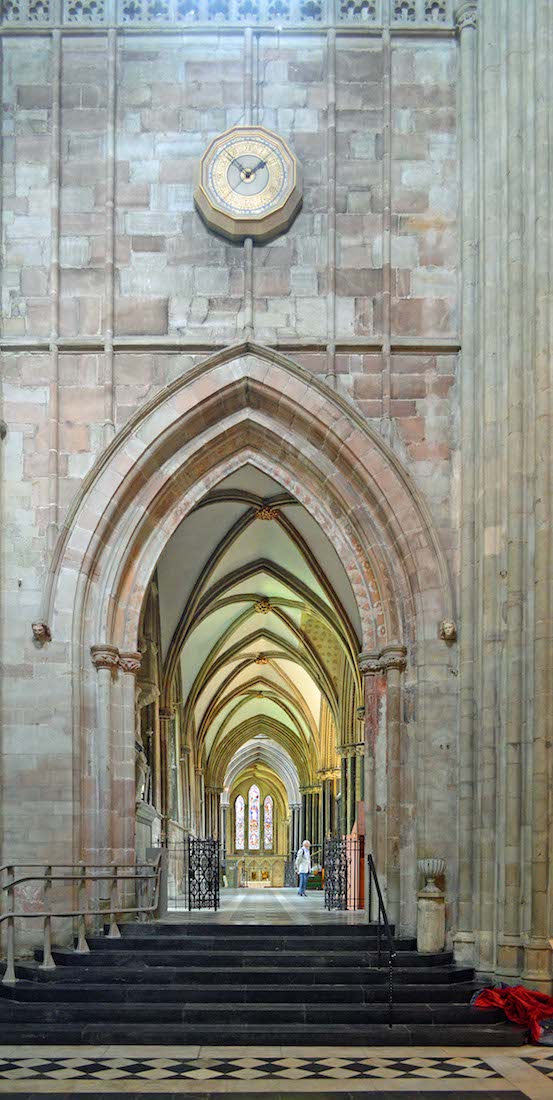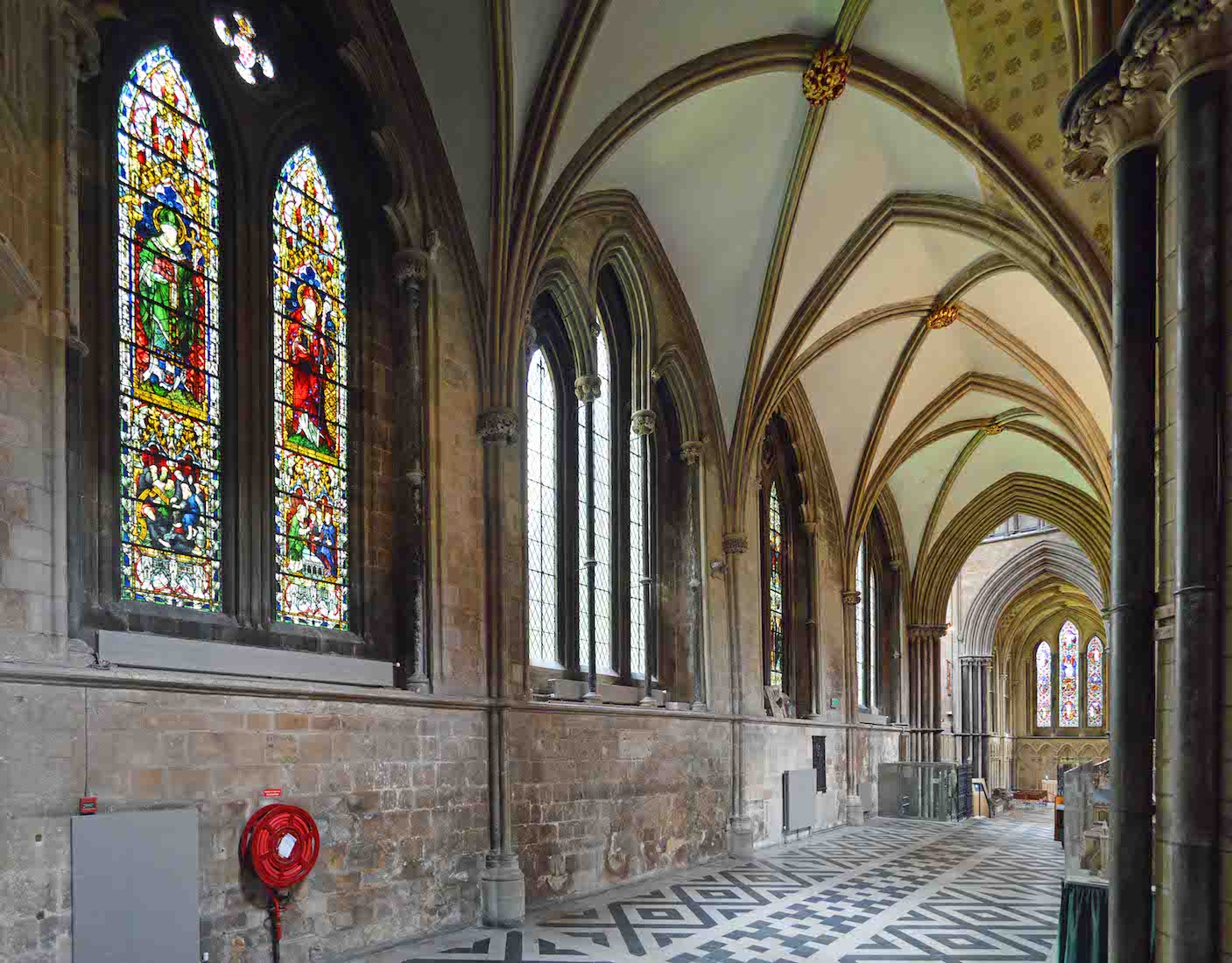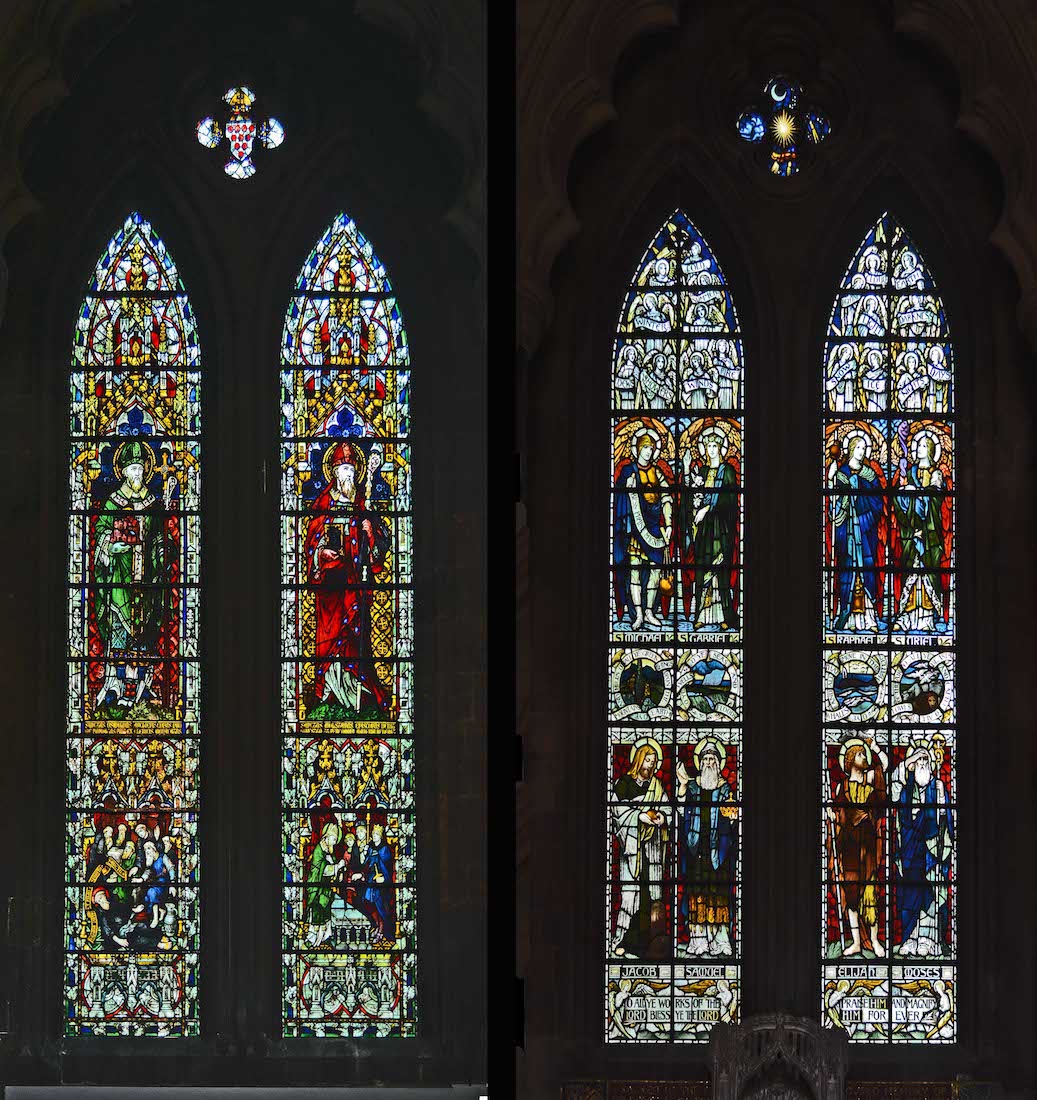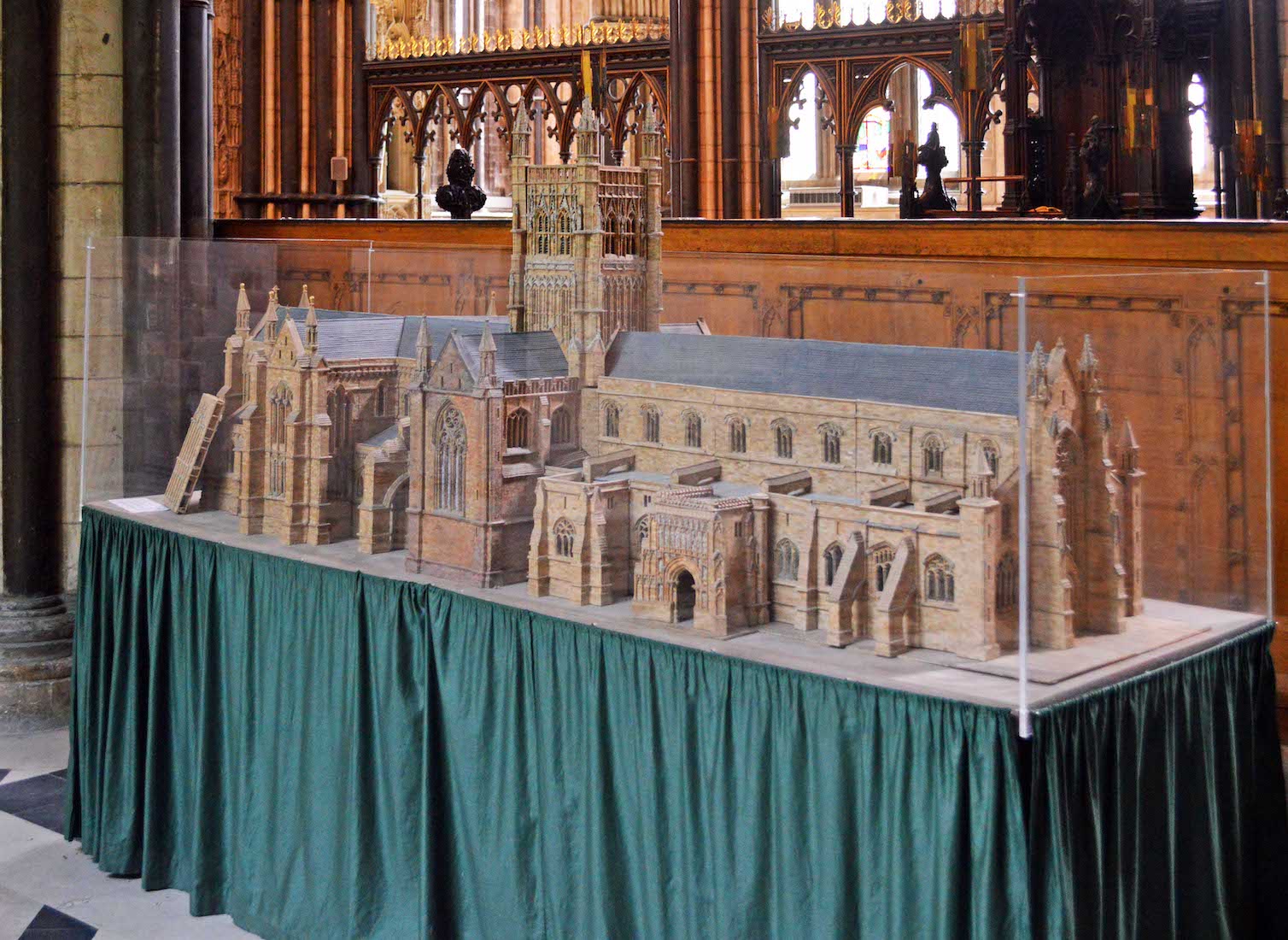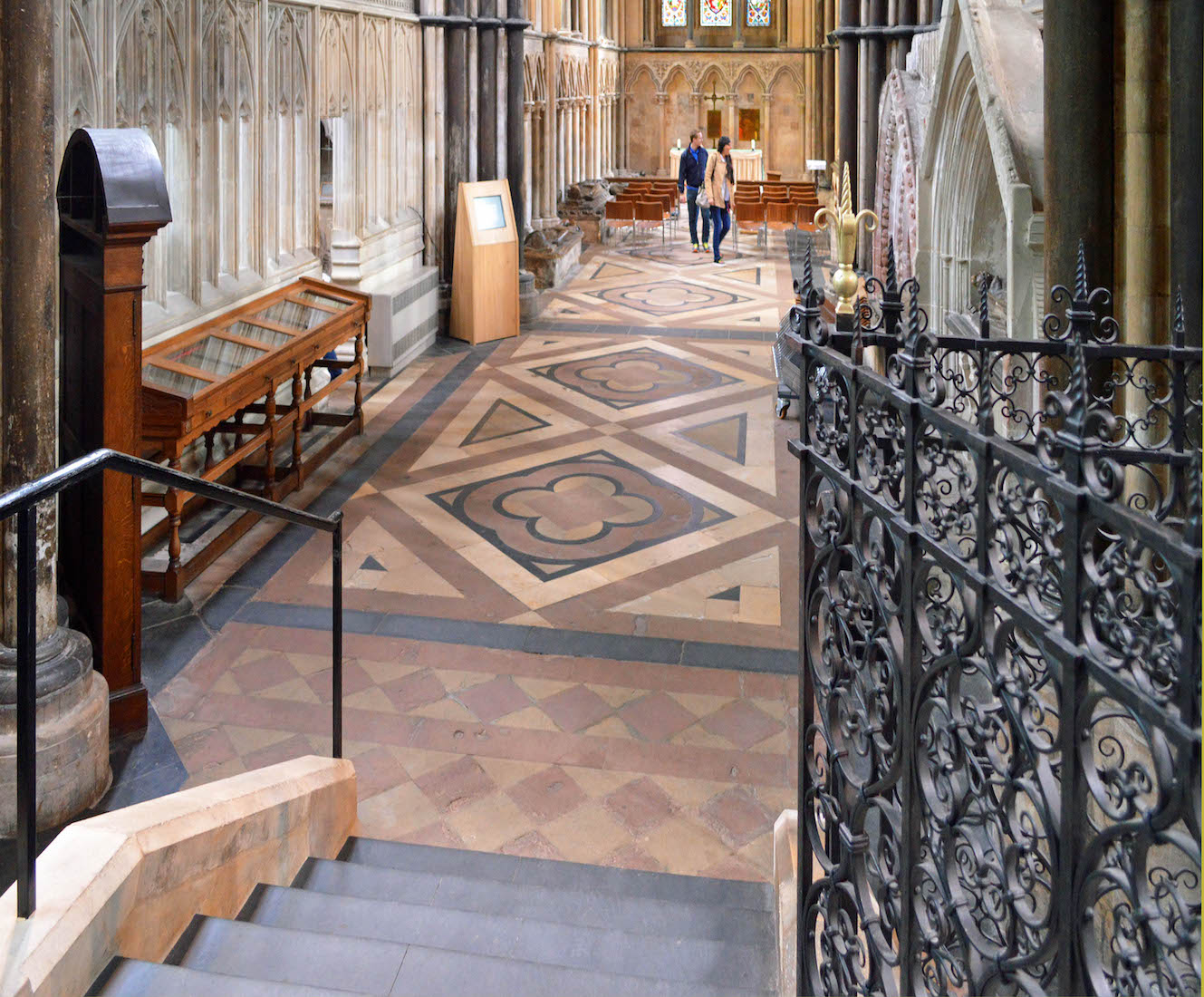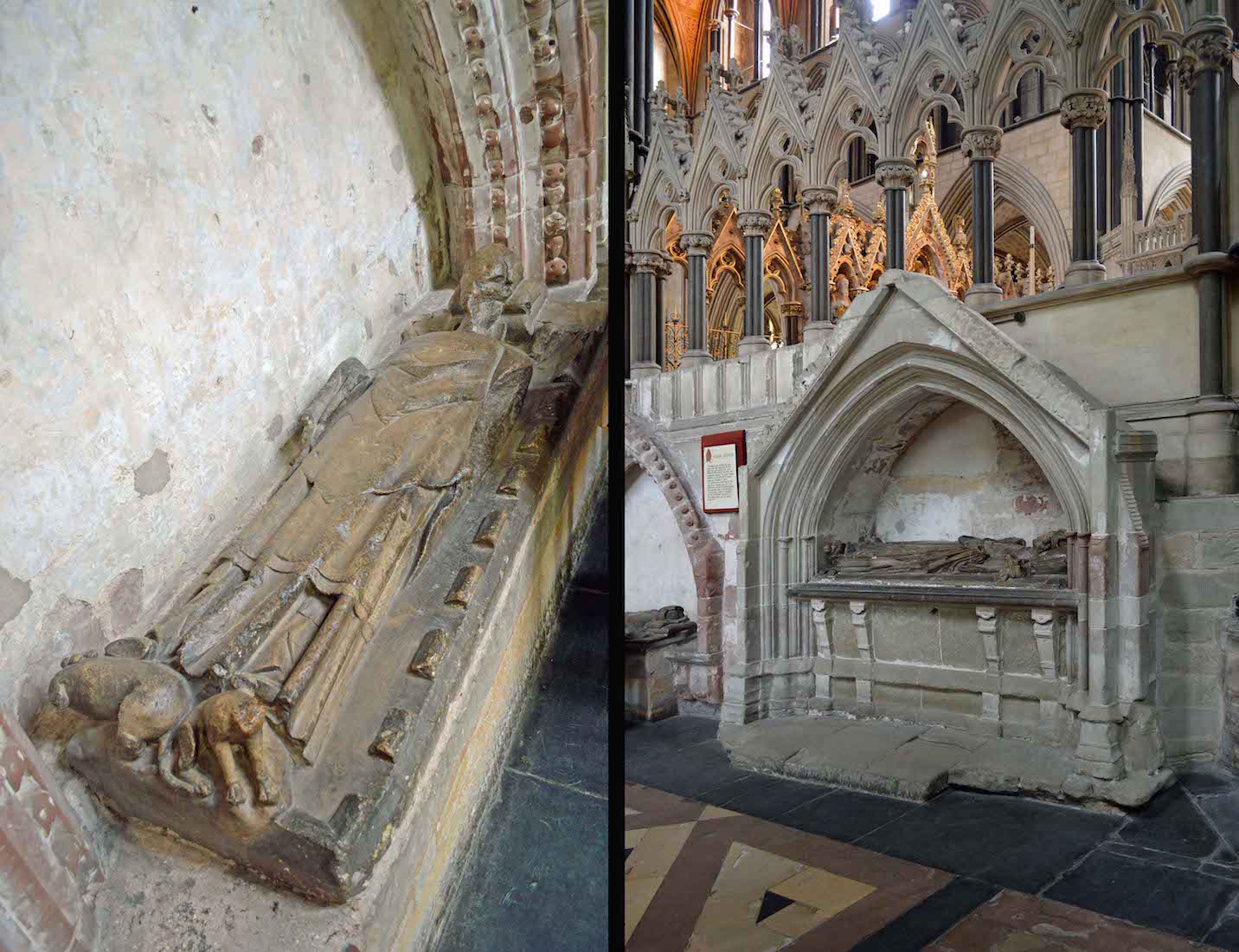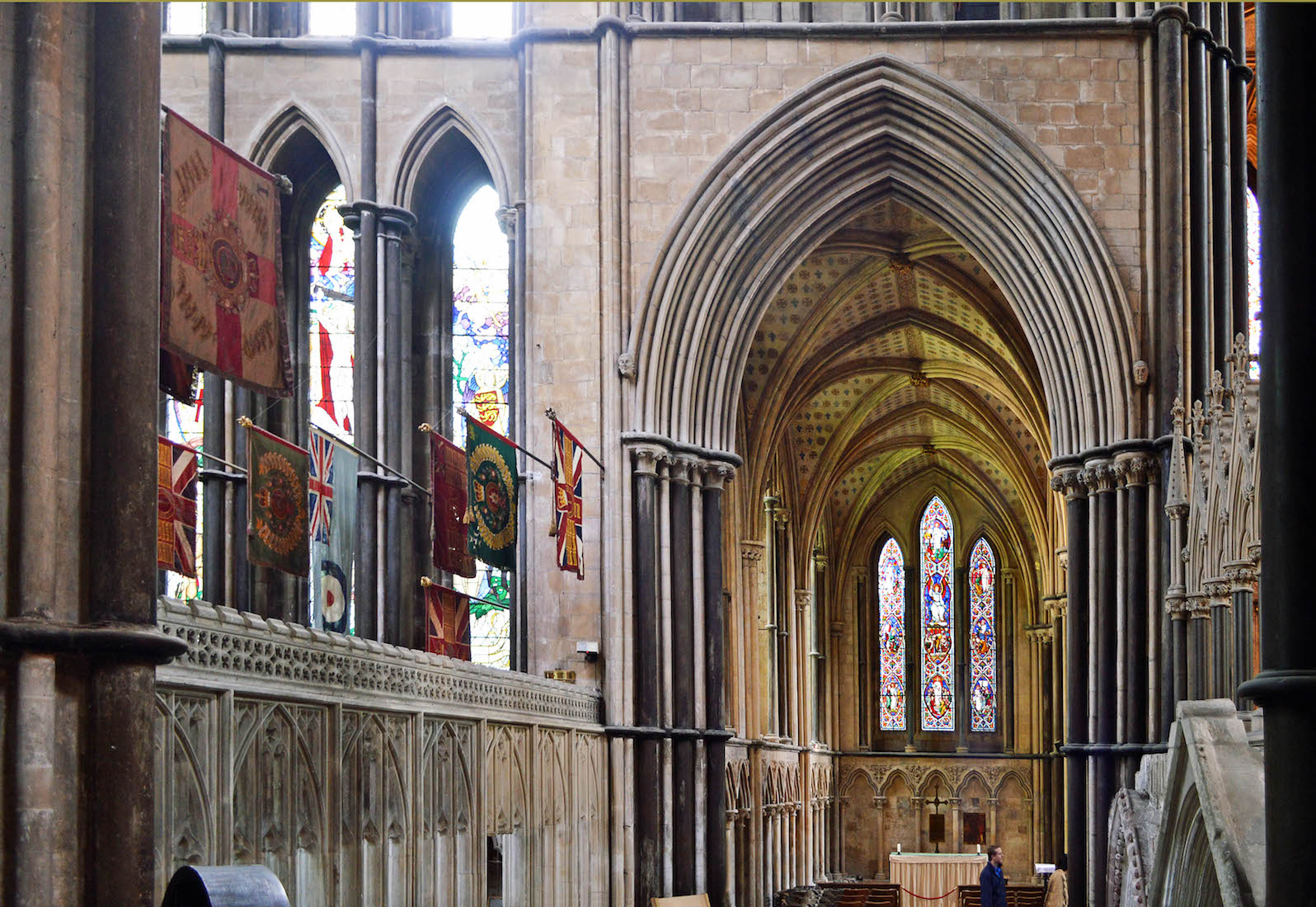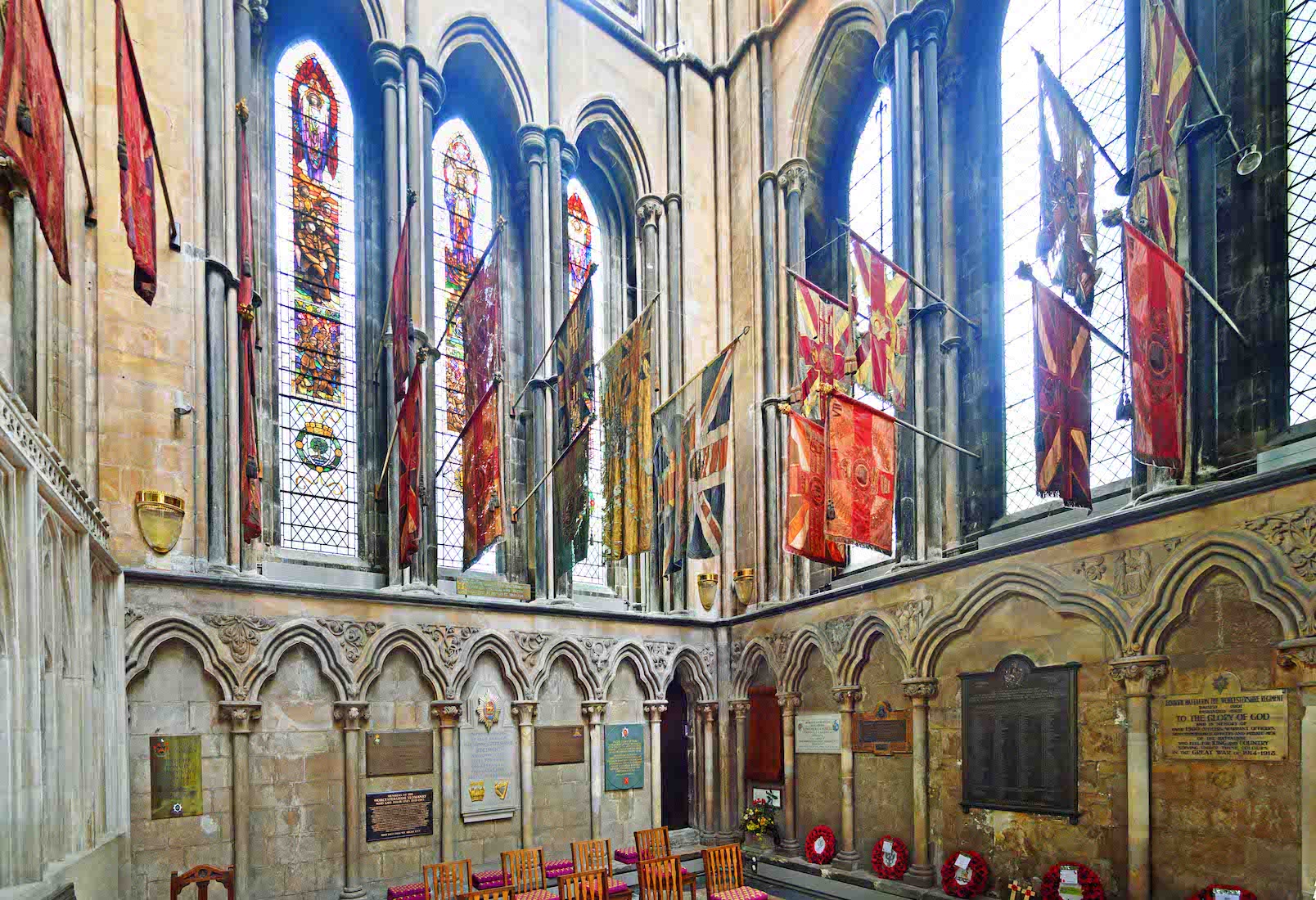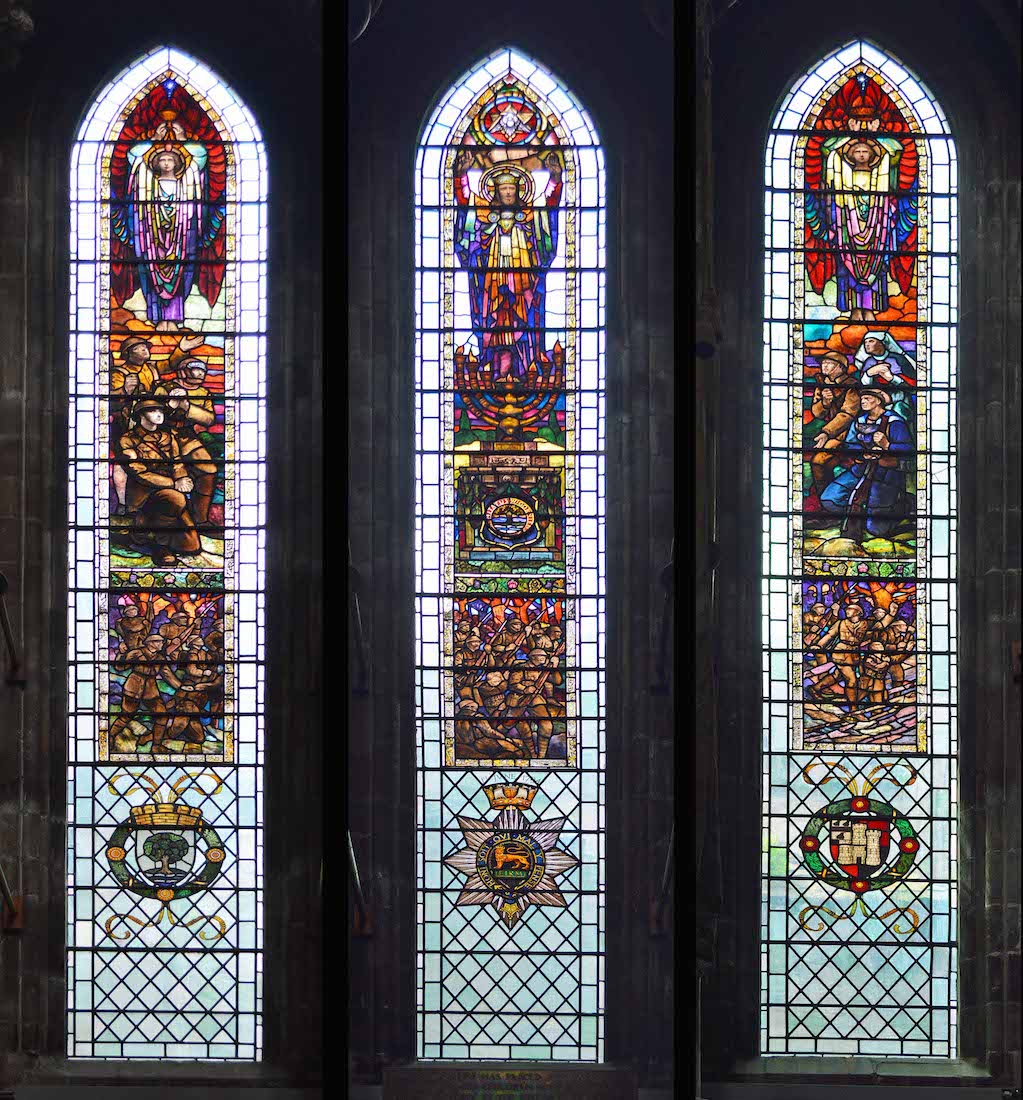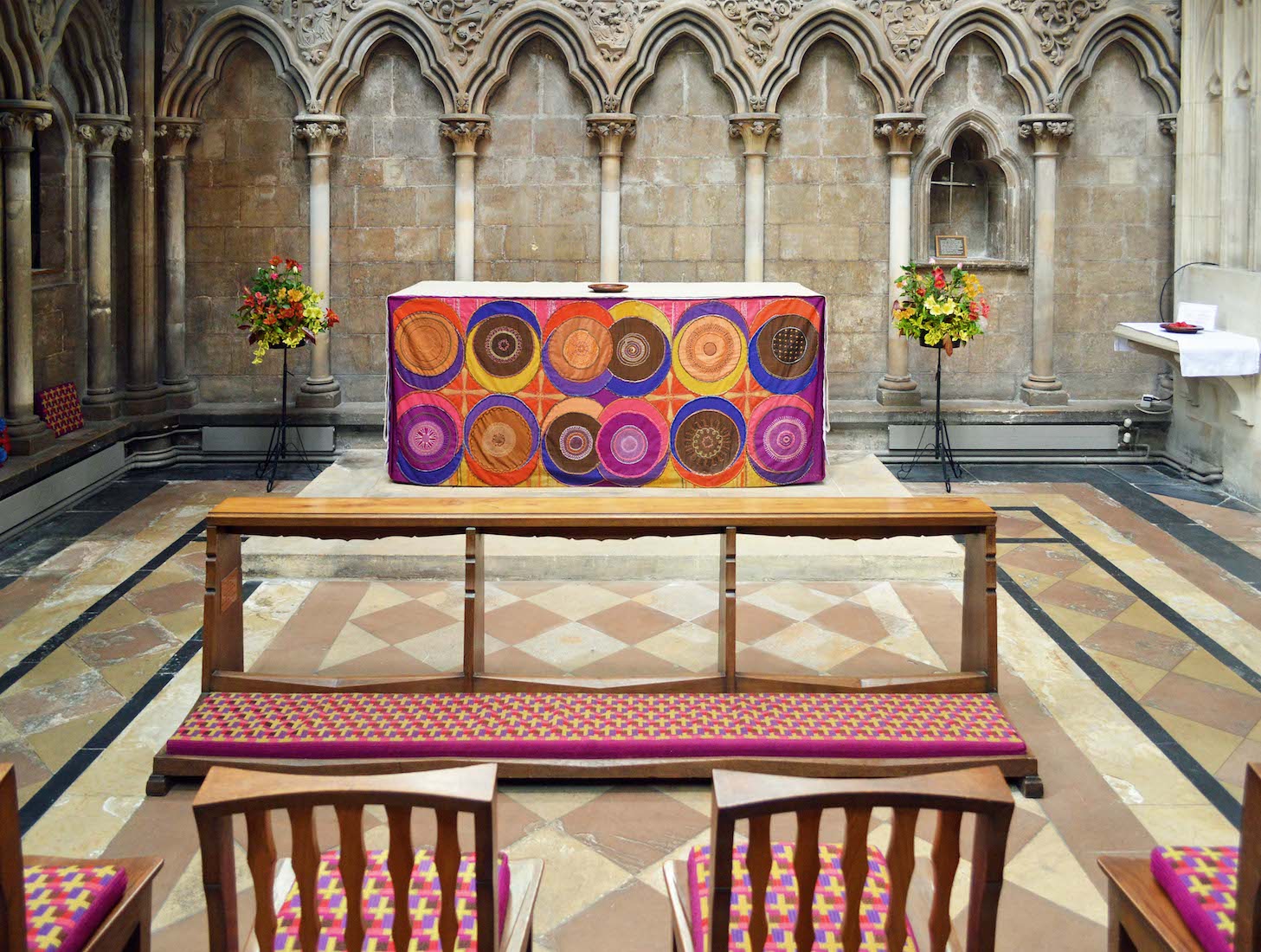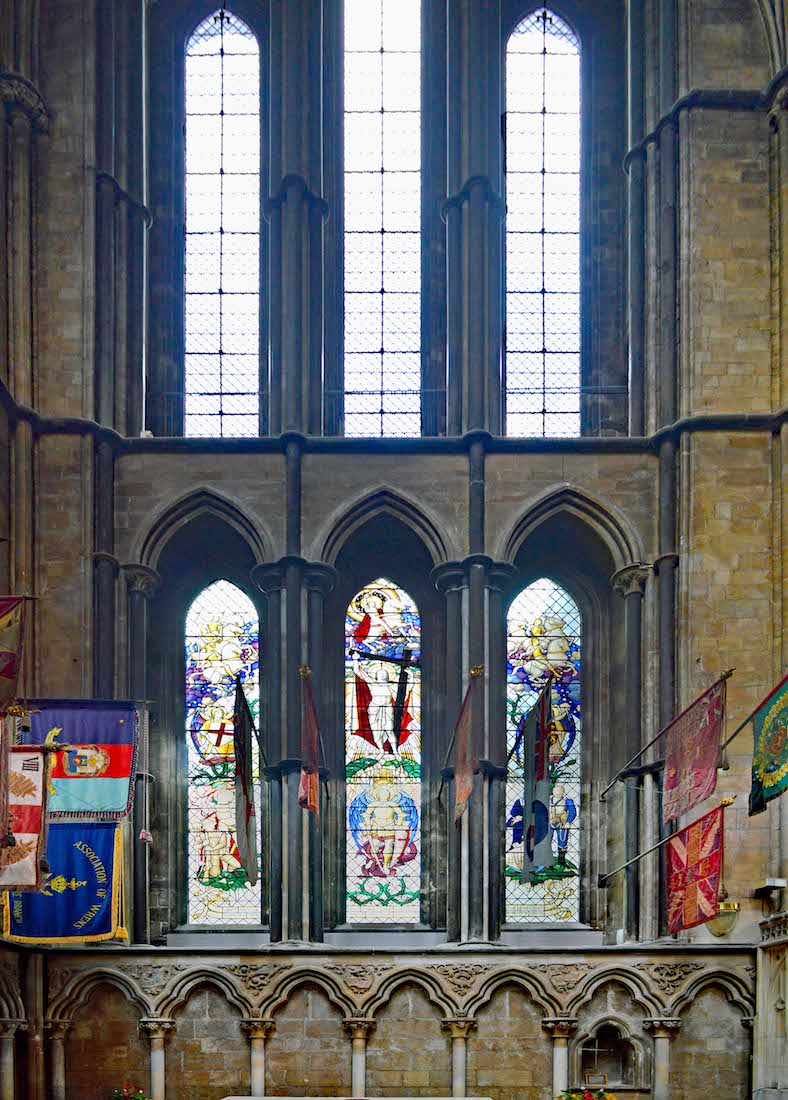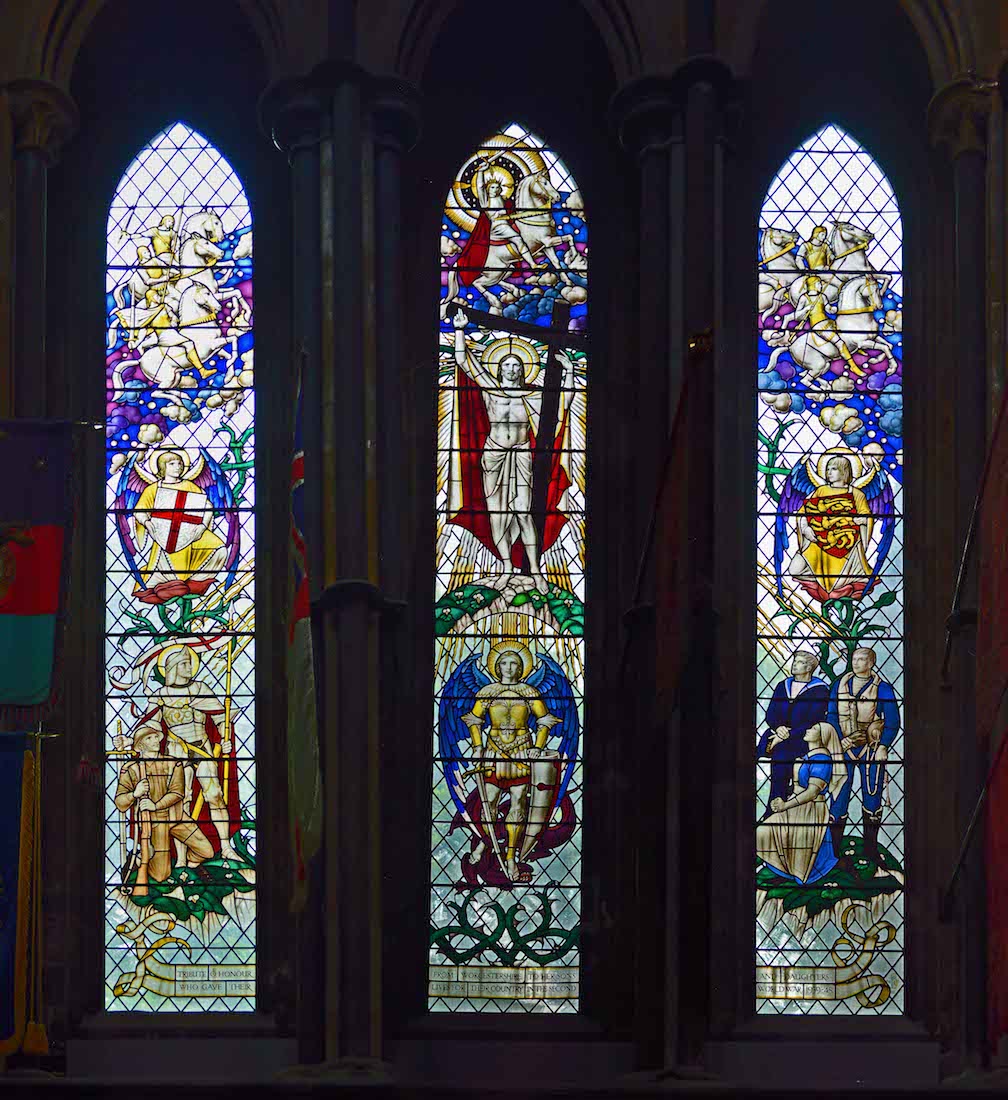61. SOUTH TRANSEPT ORGAN AND WINDOW
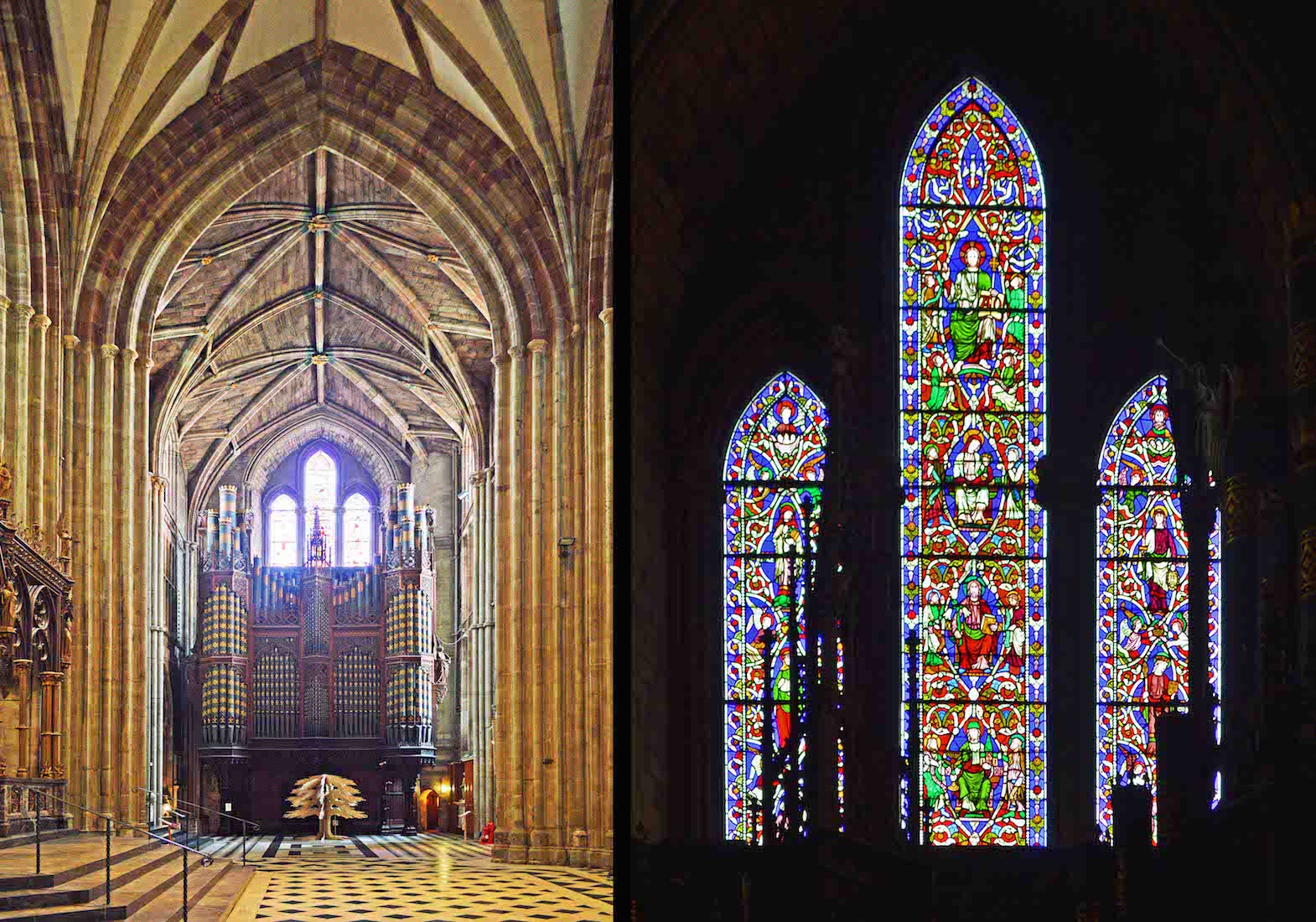
The South transept is largely filled with the giant organ. The window in the South transept is by Frederick Preedy & George Rogers of Worcester 1852. The window is based on medieval Jesse Tree designs, but is partially obscured by the organ that was installed beneath shortly afterwards. Worcester Cathedral has a long history of organs dating back to at least 1417. There have been many re-builds and new organs in the intervening period, including work by Thomas Dallam, William Hill and most famously Robert Hope-Jones in 1896. PLAN
62. ORGAN
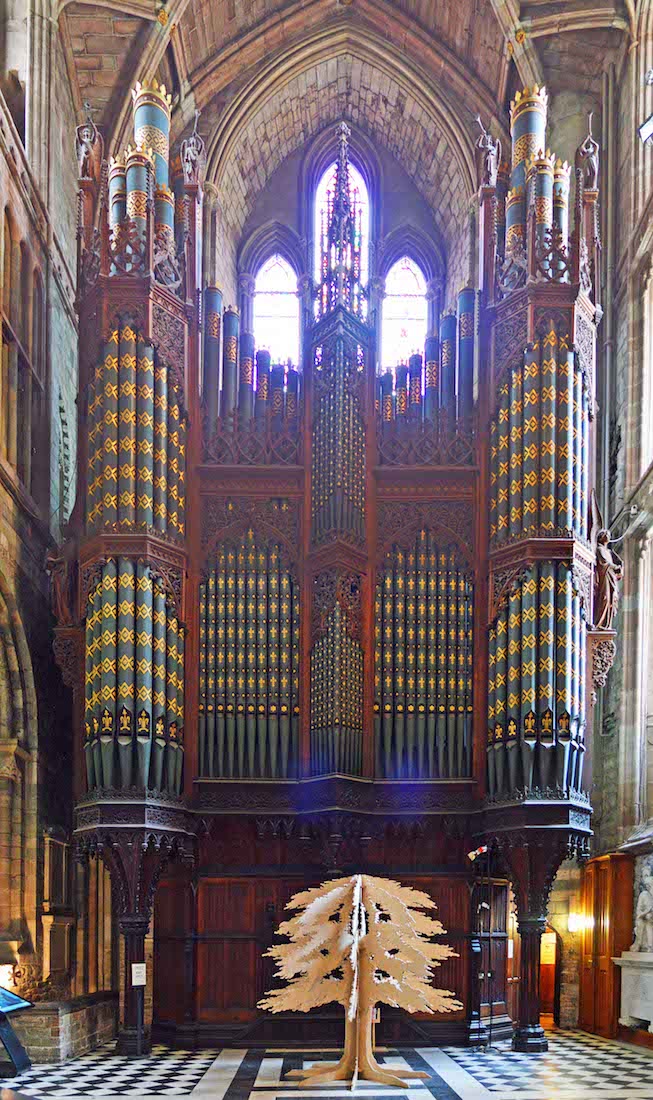
The Hope-Jones organ was heavily re-built in 1925 by Harrison & Harrison, and then regular minor works kept it in working order until Wood Wordsworth and Co. were called in 1978. It was a large four-manual organ with 61 speaking stops. It had a large Gothic Revival case with heavily decorated front pipes as well as two smaller cases either side of the quire. This organ (apart from the large transept case and pedal pipes) was removed in 2006 in order to make way for a new instrument by Kenneth Tickell, which was completed in the summer of 2008.
63. NAVE ORGAN
The nave has a separate three-manual Rodgers organ, placed on the South side of the crossing. An information sheet gives details of this organ.
64. ENTRY TO THE CRYPT
Right close to the nave organ are steps leading down to the crypt. Next to the stairs is a fine colourful display of coats of arms. The crypt is the most substantial remnant of the original St Wulfstan’s Cathedral. The semi-circular end of the crypt reflects the original shape of the main Cathedral above before it was extended in the thirteenth-century. Although the crypt is smaller than when it was built it is still an impressive work of late eleventh-century architecture.
65. INSIDE THE CRYPT
The crypt is home to ‘The Worcestershire Pilgrim’ exhibition with various items on display. At right is a model of the early Romanesque Cathedral.
66. CRYPT SERVICES
The centre of the crypt is neatly arranged with seating placed between its tidy rows of columns. Some services are still held here.
67. AISLE AND PIETÀ
Rather tucked away in the crypt is this Pietà by Glynn Williams. A 1991 cutting reads: Visitors to Worcester Cathedral will be able to admire a new modern sculpture which has recently been placed in the crypt. The sculpture is a Pietà by Glynn Williams and was offered for sale at Sotheby’s last summer in aid of the Worcester Cathedral Restoration Appeal, being purchased by the Friends of Worcester Cathedral. The Dean of Worcester, the Very Rev Robert Jeffery said: ‘The Pieta is a deeply moving sculpture by one of the country’s finest sculptors. It blends into the Crypt well and will be a real aid to prayer and devotion.’
68. CRYPT OF ST WULFSTAN
The information board tells us that this ancient crypt was built in 1084 and refurbished in 1984. The Cathedral has designated it as the Chapel of Unity.
69. ENTRY TO THE NORTH QUIRE AISLE
We leave the quiet reflectiveness of the crypt and return to the crossing, moving to the North side. Here we find this entry to the North quire aisle.
70. NORTH QUIRE AISLE
The North quire aisle is quite uncluttered. There are attractive red and gold ceiling bosses, a couple of stained glass windows for us to look at, and at extreme right is a model of the Cathedral.
71. NORTH QUIRE AISLE WINDOWS
The pair of intricately designed lancets at left protray St Oswald, and St Wolstanus (Wulfstan) – a bishop of Worcester. The window at right depicts across the top the archangels St Michael, St Gabriel, St Raphael and St Uriel, and below, the Old Testament characters Jacob, Samuel, Elijah and Moses.
72. ANOTHER MODEL OF THE CATHEDRAL
On the inner side of the aisle is another model of the Cathedral, showing its North face.
73. APPROACHING THE EAST END
Following the North quire aisle we come to this short flight of steps down to the retroquire. Alongside is a more modern elevator platform. The screen for St George’s Chapel is to our left, and we notice two old effigies just beyond.
74. TWO OLD EFFIGIES
Before investigating the chapel, we look at these effigies. At left is Bishop de Bransford, and at right Bishop Cobham. Wulstan Bransford was a medieval Bishop of Worcester, elected in 1339, and bishop until his death in 1349. Thomas Cobham (died 1327) was an English churchman, who was Archbishop-elect of Canterbury in 1313 and later Bishop of Worcester from 1317 to 1327.
76. WEST AND NORTH CHAPEL WALLS
The Chapel actually faces East. In the West wall of the Chapel, looking down on the Altar is the wonderful ‘Memorial Window, to the Officers, Warrant Officers, Non-Commissioned Officers, and Men of the County and City of Worcester, and of The Worcestershire Regiment, who gave their Lives in the Great War.’ The Chapel is a blaze of colour provided by the windows and the hanging Regimental Colours.
77. CHAPEL MEMORIAL WINDOW
The artist of the window was Mr. J. Eadie Reid. Included at the base of the window is the shield with the emblem of The Worcestershire Regiment with the words ‘Honi soit qui mal y pense’ (shame on he who thinks evil of it). The window was unveiled on 11th November 1921, by the then Colonel of the Regiment, General Sir George Higginson, G.C.B. The window shows army troops in battle.
78. CHAPEL ALTAR
At the front of the Chapel is a simple altar and kneeling rail. In the recess at right is a Coventry Cross of Nails. The original Cross of Nails was made of three nails from the roof truss of the old bombed cathedral by Provost Richard Howard of Coventry Cathedral. It was later transferred to the new cathedral, where it sits in the centre of the altar cross. It has become a symbol of peace and reconciliation across the world.
79. CHAPEL EAST WINDOWS
Being part of the transept, the Chapel of St George is very high with two tiers of windows. The lower windows above the altar have stained glass.
80. CHAPEL ALTAR WINDOWS
The altar window is given ‘in tribute and honour from Worcestershire to her sons and daughters who gave their lives for their country in the Second World War 1939 – 1945’. The windows appear to show Christ at the centre with the Archangel Michael below. Members of the armed forces are pictured in the lower side lancet windows, with perhaps, an allusion to ‘riding into glory’ in the upper side windows.


